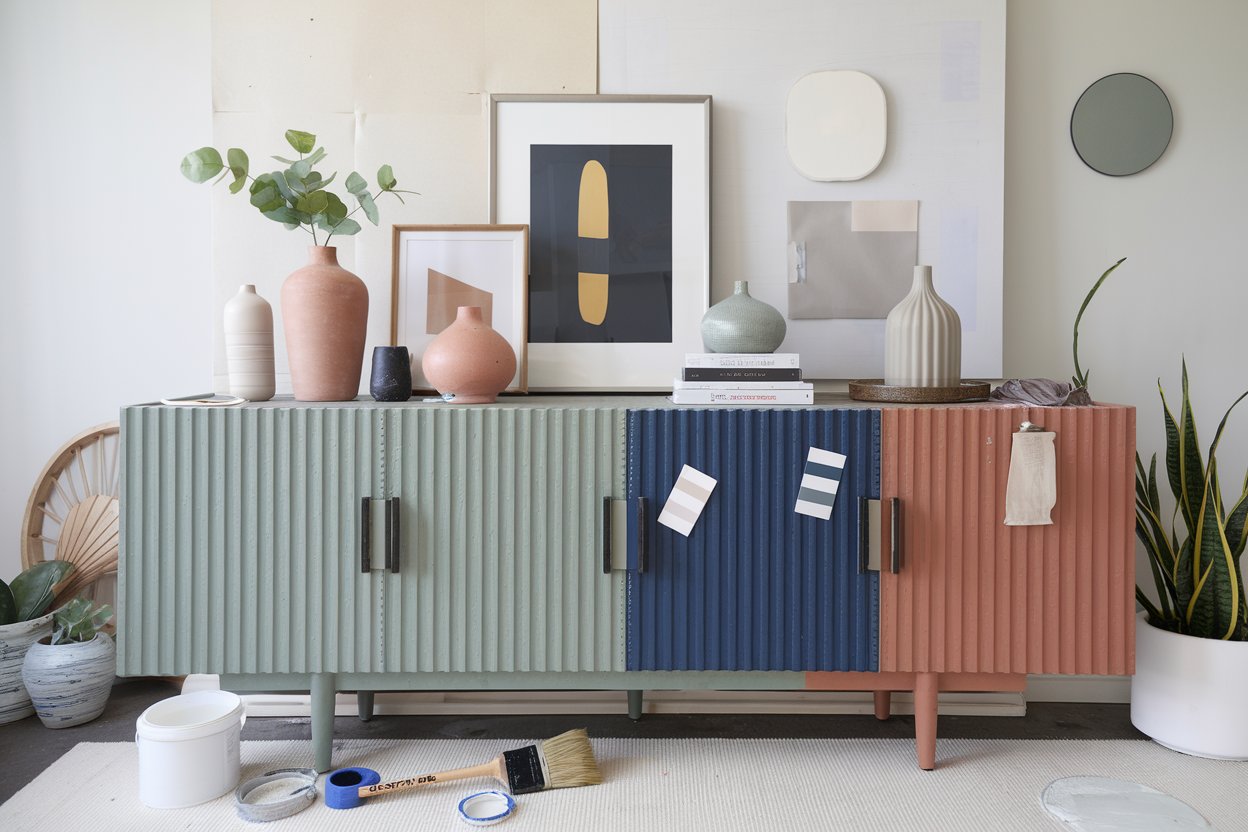
So, you’ve got this fluted sideboard—you know, the one with those cool vertical grooves—and you’re staring at it, wondering how to make it work with your room’s colors. Maybe it’s that old piece from your grandma’s house, or maybe you snagged a new one from HomeCrt’s latest collection. Either way, you’re stuck. Should you paint it? Leave it as-is? How do you even start matching it to your couch, walls, or that rug you love? Don’t worry. We’re here to break it down like you’re talking to a friend who’s obsessed with home stuff (that’s us, by the way). By the end of this, you’ll have ideas for colors, painting tricks, and ways to make that sideboard the star of your space—no fancy jargon, just real talk.
Why Fluted Sideboards Are Your Secret Weapon
Fluted details are having a major moment right now. Those grooves add texture and depth, kind of like ripples in water. But here’s the thing: they can either disappear into your room or pop like a fireworks show, depending on how you handle the color. Let’s say your sideboard is in a small apartment. Painting it a soft sage green could make it blend with your plants and feel calm. Or if you’re going for drama, a deep navy blue might make those grooves stand out like shadows. At HomeCrt, we’ve seen customers turn boring sideboards into focal points just by picking the right shade. Pro tip: Hold paint swatches next to your sideboard in different lights—morning sun vs. evening lamps—to see how colors shift.
Matching Colors Without Losing Your Mind
Okay, let’s talk color schemes. Imagine your sideboard is in a living room with a beige sofa and gold accents. A warm terracotta or muted peach could tie everything together without screaming “look at me!” But if your room’s already full of bold stuff (like a red rug or patterned curtains), maybe go neutral. A creamy white or light gray lets the fluting do the talking. Need inspiration? Check out Sherwin-Williams’ color palettes—they’re a lifesaver for figuring out what works. And hey, if you mess up? Sand it back and try again. HomeCrt’s team once helped a customer repaint their sideboard three times before landing on the perfect blush pink. No judgment here!
Painting Tricks That Actually Work
Painting a fluted sideboard isn’t like painting a flat wall. Those grooves can trap drips or leave streaks if you’re not careful. Start by cleaning the surface—dust is the enemy. Use a small foam roller for the flat parts and a detail brush for the grooves. Thin coats are better than globbing it on. For a trendy look, try two tones: maybe a matte black base with gold edges on the fluting. Or go wild with a gradient—light blue at the top fading into navy at the bottom. If you’re nervous, HomeCrt’s blog has a step-by-step video (with bloopers!) showing how to avoid common mistakes. Remember, paint dries darker, so test a spot first.
Styling Your Sideboard Like a Pro
Once your sideboard’s painted, it’s time to style it. Think of it as a stage: you want balance, not chaos. If the color’s bold, keep decorations simple—like a white vase or a single piece of art. For neutral sideboards, add pops of color with books, candles, or a funky lamp. Got kids? Use the top for storage baskets (toss in toys or blankets) so it’s pretty and practical. One HomeCrt customer turned their sideboard into a coffee bar by adding a tray, mugs, and a tiny plant. Genius, right? Oh, and don’t forget lighting. A small lamp or string lights can make your sideboard glow like it’s straight out of a magazine.
Keeping It Fresh (Without Constant Work)
Alright, you’ve nailed the color and style. How do you keep it looking good? Dust the fluting weekly with a soft cloth—those grooves love hiding crumbs. For painted finishes, a gentle cleaner like diluted dish soap works. Avoid harsh chemicals unless you want to repaint every six months. If the color starts feeling stale, swap out accessories instead of repainting. Throw on a new table runner or seasonal decor (think pumpkins in fall, seashells in summer). And if you ever feel stuck, HomeCrt’s design team is just a click away. We’ve all been there, staring at a sideboard at 2 a.m., wondering if teal was a mistake. Spoiler: It wasn’t.
So there you go. Fluted sideboards aren’t just furniture—they’re your chance to play with color, texture, and personality. Whether you’re painting it neon yellow or keeping it classic white, the key is to have fun and make it yours. Remember, HomeCrt’s got your back if you need supplies or advice. Now go grab a brush, crank up your favorite playlist, and turn that sideboard into something you’ll love walking into every day. (And if you accidentally paint the dog? We won’t tell.)





